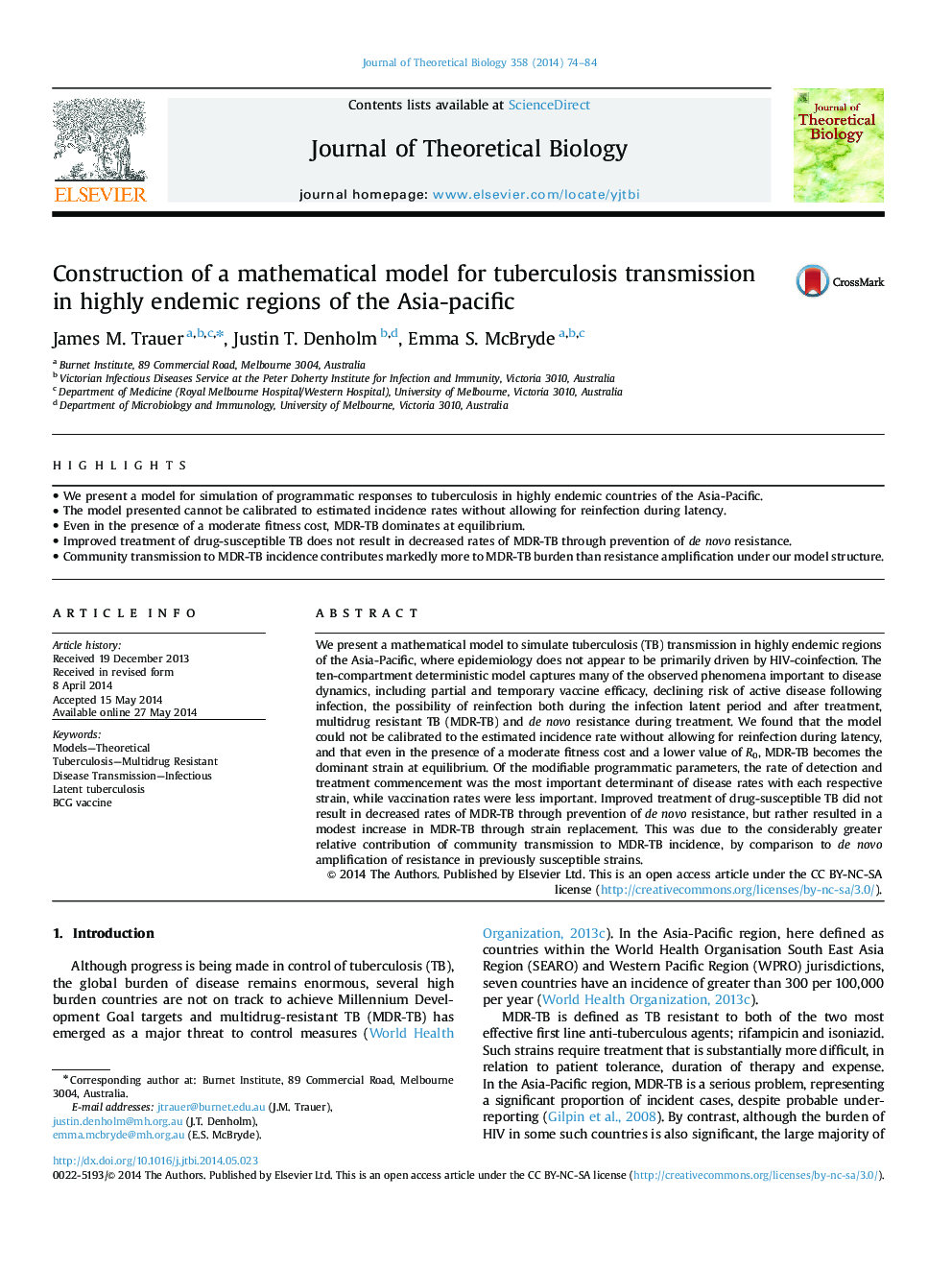| Article ID | Journal | Published Year | Pages | File Type |
|---|---|---|---|---|
| 6370535 | Journal of Theoretical Biology | 2014 | 11 Pages |
Abstract
We present a mathematical model to simulate tuberculosis (TB) transmission in highly endemic regions of the Asia-Pacific, where epidemiology does not appear to be primarily driven by HIV-coinfection. The ten-compartment deterministic model captures many of the observed phenomena important to disease dynamics, including partial and temporary vaccine efficacy, declining risk of active disease following infection, the possibility of reinfection both during the infection latent period and after treatment, multidrug resistant TB (MDR-TB) and de novo resistance during treatment. We found that the model could not be calibrated to the estimated incidence rate without allowing for reinfection during latency, and that even in the presence of a moderate fitness cost and a lower value of R0, MDR-TB becomes the dominant strain at equilibrium. Of the modifiable programmatic parameters, the rate of detection and treatment commencement was the most important determinant of disease rates with each respective strain, while vaccination rates were less important. Improved treatment of drug-susceptible TB did not result in decreased rates of MDR-TB through prevention of de novo resistance, but rather resulted in a modest increase in MDR-TB through strain replacement. This was due to the considerably greater relative contribution of community transmission to MDR-TB incidence, by comparison to de novo amplification of resistance in previously susceptible strains.
Keywords
Related Topics
Life Sciences
Agricultural and Biological Sciences
Agricultural and Biological Sciences (General)
Authors
James M. Trauer, Justin T. Denholm, Emma S. McBryde,
